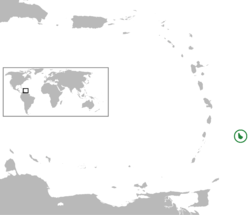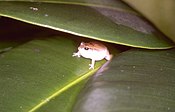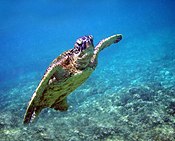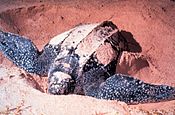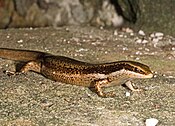The two-lined blind snake is a harmless blind snake species endemic to Martinique in the Lesser Antilles.
The Barbados racer, also commonly known as the tan ground snake, was a species of colubrid snake that was endemic to Barbados. It is now extinct.

The Barbados threadsnake is a species of threadsnake. It is the smallest known snake species. This member of the Leptotyphlopidae family is found on the Caribbean islands of Barbados and Anguilla.
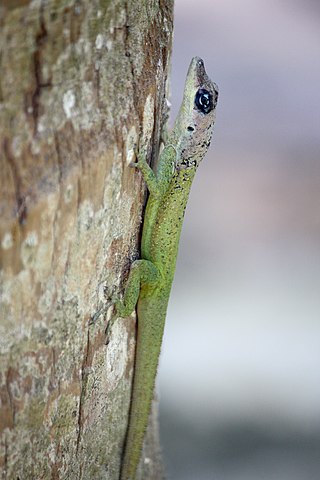
The Barbados anole is a species of anole lizard that is native to Barbados, an island-nation in the Caribbean. Originally endemic to Barbados, it has since been introduced to Saint Lucia and Bermuda. It was previously treated as a subspecies of Martinique's anole, A. roquet.
The Dominican blind snake or Dominican worm snake is a species of blind snake that is endemic to the Caribbean island-nation of Dominica, in the Lesser Antilles.
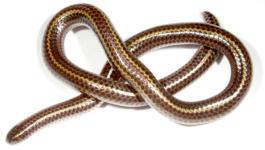
The St. Lucia threadsnake is a species of blind snake in the family Leptotyphlopidae. The species is native to the West Indies.

The Barbados leaf-toed gecko is a species of gecko endemic to the Caribbean island-nation of Barbados. It is the only known leaf-toed gecko in the Lesser Antilles.
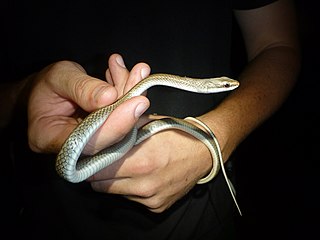
Barbour's tropical racer is a species of snake in the family Colubridae. The species is endemic to the Caribbean.
